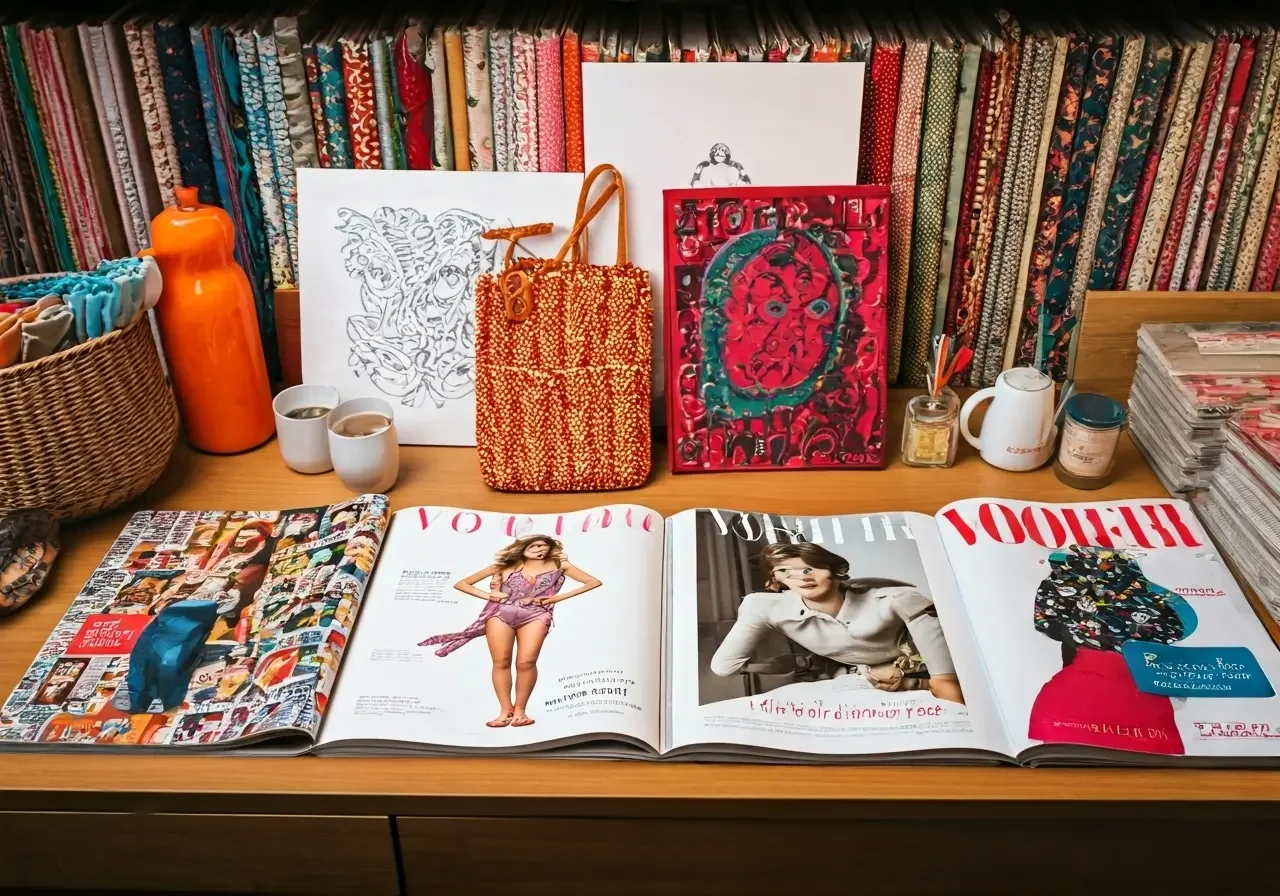Exploring the World of Editorial Styling for Modern Creatives
In today's fast-paced world of creativity, editorial styling has emerged as a crucial element for modern creatives. It's about visually telling a story that captivates and engages the audience. This blog aims to delve into the essentials of editorial styling and why it's become increasingly important for anyone looking to make a mark in the creative industry.
Understanding Editorial Styling
Editorial styling is about creating visual narratives that connect with viewers on a deeper level. Whether it's for a magazine spread or a digital campaign, editorial styling requires a blend of creativity, strategic thinking, and an awareness of current trends.
At its core, editorial styling is about storytelling without words. It uses a combination of fashion, art, and photography to communicate a message or evoke an emotion. Editorial styling can be likened to painting a picture—it sets the mood, tone, and atmosphere of a particular narrative. By piecing together elements like wardrobe, makeup, props, and settings, stylists craft a visual language that speaks volumes without a single spoken word. This meticulous process transforms ordinary items into focal points that enhance the intended narrative. Additionally, editorial styling has the power to inspire and influence cultural trends, making it a vital tool in the fashion and creative industries.
The Role of Editorial Stylists
Editorial stylists play a pivotal role in shaping the visual identity of a project. They collaborate with photographers, designers, and creatives to curate aesthetics that align with the project's narrative. Their keen eye for detail and understanding of composition makes them invaluable in translating ideas into powerful visuals.
Creativity and collaboration are at the heart of an editorial stylist's role. They work closely not only with photographers and designers but also with models, hair stylists, and makeup artists to ensure that every aspect of the shoot aligns perfectly with the creative vision. This level of collaboration requires excellent communication skills and the ability to adapt swiftly to changing ideas or unforeseen circumstances. An editorial stylist must be flexible, resourceful, and imaginative, often relying on their ability to improvise with available resources. Their expertise helps bring out the best in everyone involved, resulting in a coherent and striking final product. In this way, their work is a seamless blend of art and science.
Key Elements of Effective Editorial Styling
Successful editorial styling often involves a harmonious blend of color palettes, textures, and props. Understanding how these elements work together can enhance the overall impact of a visual story. Lighting and composition are also crucial in guiding the viewer's attention and evoking specific emotions.
Behind every compelling piece of editorial styling lies an intricate web of key elements woven together with precision. Colors, for instance, have the power to influence mood and perception. Warm tones can evoke feelings of comfort and familiarity, while cooler shades might suggest calmness or detachment. Textures—whether they're smooth, rough, glossy, or matte—add depth and dimension to a composition. Meanwhile, props provide context, rendering the narrative more relatable and tangible. Lighting, often considered the unsung hero of stylistic shoots, can transform the mood, highlight certain aspects, and guide the viewer's gaze. Each of these components must be thoughtfully curated and seamlessly integrated to evoke the desired response. The ultimate aim of editorial styling is to create a harmonious and impactful aesthetic that stays in the minds of audiences long after they’ve moved on to the next page or screen.
Trends in Modern Editorial Styling
As the digital landscape continues to evolve, editorial styling trends are constantly shifting. Current trends include minimalistic designs, a focus on sustainability, and the integration of technology, such as augmented reality, to enhance storytelling capabilities.
Minimalism has been a significant trend recently, emphasizing the importance of 'less is more.' This approach simplifies design and focuses on key elements, cutting through the noise while making a bold statement. Another notable trend is sustainability, which reflects broader global concerns. Stylists are now using eco-friendly materials and showcasing sustainable fashion practices in their work to promote environmental awareness. Additionally, the integration of technology has found its way into editorial styling, with augmented and virtual reality providing audiences with interactive, immersive experiences that elevate the storytelling aspect of styling. As technology advances and society's values shift, editorial styling adapts and evolves, keeping pace with modern-day narratives and aesthetics.
Tips for Aspiring Editorial Stylists
Aspiring editorial stylists should focus on building a strong portfolio that showcases their unique style. Networking with other creatives and staying updated with industry trends can also open up opportunities. Always be open to learning and experimenting with new ideas to hone your skills.
If you're venturing into the world of editorial styling, remember that your portfolio is your calling card. It’s crucial to curate a selection of your best work that not only highlights your technical proficiency but also your ability to tell a story through visuals. When building your portfolio, aim for variety—showcase different styles, themes, and contexts to demonstrate your versatility and adaptability. Stay on top of current industry trends by attending workshops, seminars, and fashion shows. These gatherings not only provide learning opportunities but also are excellent venues for networking. Making connections with photographers, designers, and other stylists can lead to collaborations, which, in turn, can further your career. Lastly, never underestimate the importance of practice and experimentation. Try new techniques and push boundaries, as editorial styling thrives on innovation and creativity.
Embracing the Transformative Power of Editorial Styling
Editorial styling is more than just an art form; it's a powerful storytelling tool that can elevate the work of modern creatives. By understanding its nuances and embracing its flexibility, you can craft visuals that resonate and leave a lasting impression. As you explore and experiment with this dynamic form, remember that the heart of editorial styling lies in creativity, collaboration, and a keen eye for detail. Visit our homepage to learn more about how we can support your creative journey.

